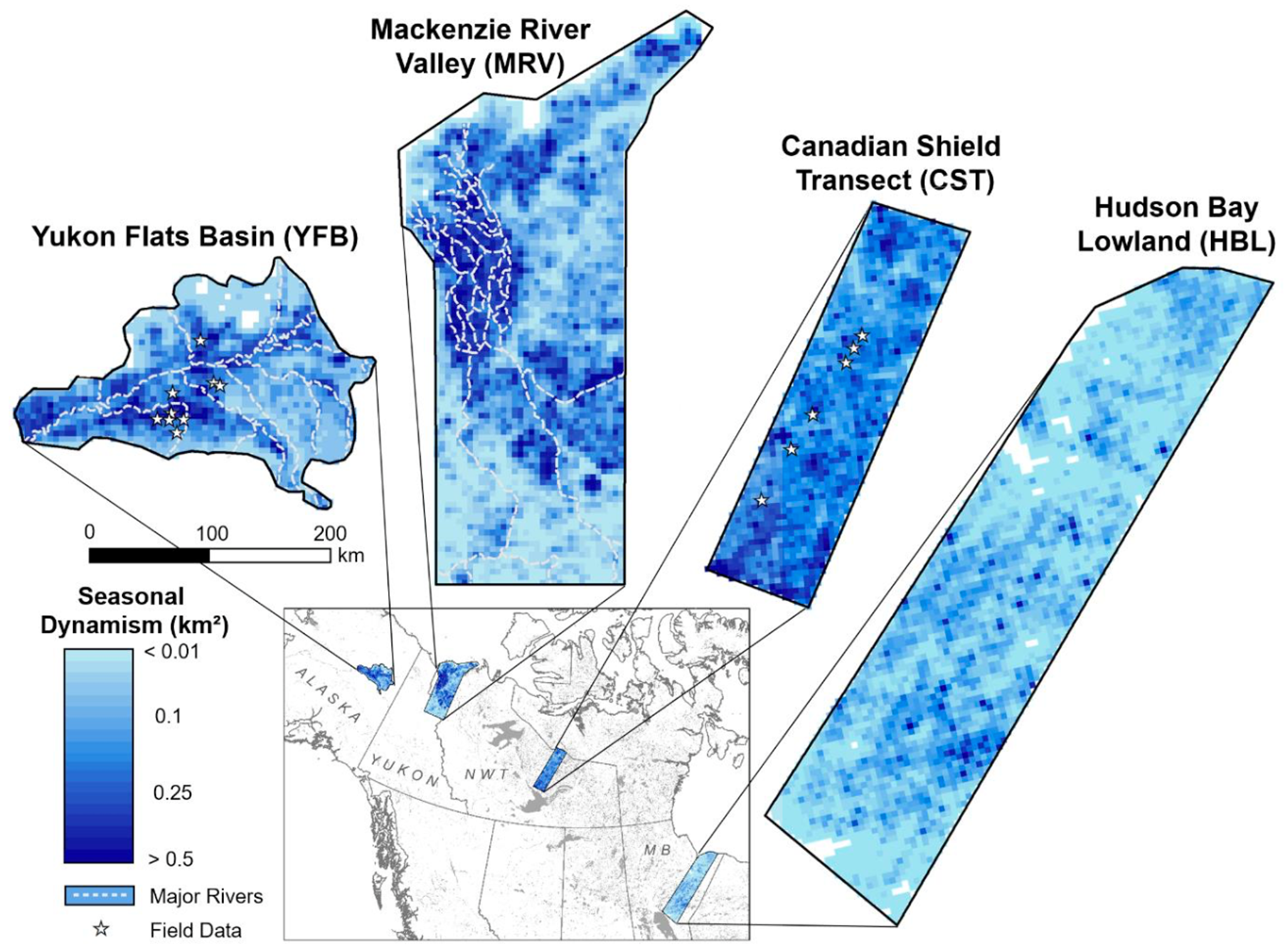Dove and RapidEye Images Reveal the Climate Dynamics of Tens of Thousands of High-latitude Lakes
In the Arctic and Boreal regions, millions of freshwater lakes influence carbon dioxide and methane emissions to the atmosphere. Lakes that are more dynamic, with a variable shoreline, may have a greater flux of these greenhouse gases. Leveraging the Planet Dove and RapidEye constellations, which collectively image daily and sometimes multiple times per day at high latitudes, Sarah Cooley of Brown University led the first dense, high-resolution analysis of nearly 100,000 individual lakes in this region. Cooley carved through an incredibly dense stack of Planet imagery for four different watersheds representing a diversity of habitats in the Arctic / Boreal region, and explored lake variability throughout the 2017 growing season. She found that in some areas, lake shorelines fluctuated much more widely than previously known. These fluctuations expose organic carbon to warm summer air, and can increase carbon emissions. "A shoreline that's fluctuating is going to emit more carbon than a stable shoreline," Cooley said in a report by Brown University: "these short-term fluctuations, which no one had ever mapped before, suggest these lakes are potentially emitting more gas than people thought." Cooley devised her own machine learning algorithms to help break down the immense Planet dataset. "What I'm most excited about from a science perspective is the ability to make use of this new CubeSat imagery," Cooley said. "We couldn't have made these observations without the CubeSats, and here we show that it's possible to extract valuable scientific information from those images." Read Cooley’s entire paper in Geophysical Research Letters, and the synopsis by Brown University. [caption id="attachment_143352" align="aligncenter" width="1311"]


Ready to Get Started
Connect with a member of our Sales team. We'll help you find the right products and pricing for your needs


